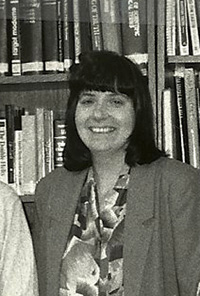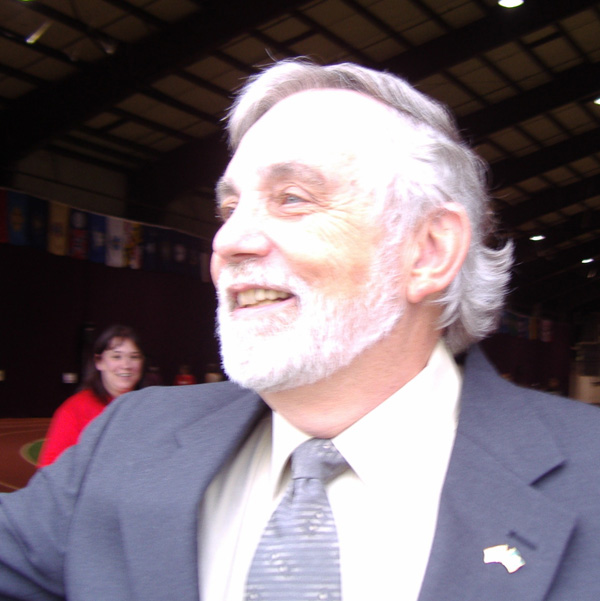Academic Coordinator, CCV (retired)
 When I was hired, I was the first full time CSSS (Coordinator of Student Support Services) the Newport site had had. At that time, the pay for the coordinators was under discussion, CSSS being on a step lower than the CIA (Coordinator of Academic Instruction). I am not sure why the distinction existed, except that there was a teaching component required of all CSSS – teaching Dimensions of Leaning I every semester. At the end of my first fiscal year with the college, the pay changed and both coordinators were placed on the same pay step. The focus of the position was on basic skills courses (scheduling and hiring instructors as well as supervising them), academic support in the form of tutoring, and new students who needed to be placed in those courses as well as working closely with Reach-up workers and providing support to their clients who became our students. In addition, all basic skills testing, scoring and placement was done by the CSSS. In the beginning, no testing or enrollment in basic skills was mandatory for students, just highly suggested. When I began, my mandate was to try to get every new student tested and placed correctly, so my mantra became “take the tests and then we will talk about course selection” and basic skills testing became mandatory in our site. As a result, I became known by our current CSSS director as the “queen of basic skills.” CSSS has their own director, even though they also worked under a regional director. Under that director’s guidance, meetings were held to discuss basic skills testing, how Dimensions I and II were to be taught (including instructor training as more faculty and fewer CSSS taught the courses), creating a college-published text book for Dimensions of Learning (I later became the editor of this text), and curricular changes and refinements in the basic skills courses/curriculum. As enrollment in the college as a whole grew, so did the CSSS job, encompassing supervision of other curricular areas and advising a more varied group of students. As a result of that, teaching no longer was a required part of the job.
When I was hired, I was the first full time CSSS (Coordinator of Student Support Services) the Newport site had had. At that time, the pay for the coordinators was under discussion, CSSS being on a step lower than the CIA (Coordinator of Academic Instruction). I am not sure why the distinction existed, except that there was a teaching component required of all CSSS – teaching Dimensions of Leaning I every semester. At the end of my first fiscal year with the college, the pay changed and both coordinators were placed on the same pay step. The focus of the position was on basic skills courses (scheduling and hiring instructors as well as supervising them), academic support in the form of tutoring, and new students who needed to be placed in those courses as well as working closely with Reach-up workers and providing support to their clients who became our students. In addition, all basic skills testing, scoring and placement was done by the CSSS. In the beginning, no testing or enrollment in basic skills was mandatory for students, just highly suggested. When I began, my mandate was to try to get every new student tested and placed correctly, so my mantra became “take the tests and then we will talk about course selection” and basic skills testing became mandatory in our site. As a result, I became known by our current CSSS director as the “queen of basic skills.” CSSS has their own director, even though they also worked under a regional director. Under that director’s guidance, meetings were held to discuss basic skills testing, how Dimensions I and II were to be taught (including instructor training as more faculty and fewer CSSS taught the courses), creating a college-published text book for Dimensions of Learning (I later became the editor of this text), and curricular changes and refinements in the basic skills courses/curriculum. As enrollment in the college as a whole grew, so did the CSSS job, encompassing supervision of other curricular areas and advising a more varied group of students. As a result of that, teaching no longer was a required part of the job.
On my first day I was handed a pile of registration forms and quickly thrown into the excruciating job of calling students to inform them that their chosen class(es) had been canceled and help them choose other(s). Knowing nothing about what requirements there were, or the students’ abilities or past achievements, I spent a lot of time doing research and calling students back. I was also quickly initiated into Newport’s famous or infamous “bathroom wall” course layout.
In the Newport office at the time was a very large women’s bathroom, whose walls were marble, just off the front of the site and the hall that held the coordinator’s offices. One such wall was the largest, clearest space easily accessed by all staff, so the site office manager and secretary posted every course on its own sheet of paper, and during registration, students names were entered on those sheets. The principle behind the wall was that the courses were easily viewed – this was long before computerized registration and site course numbers – so the coordinators could see how courses were growing or not, and have a solid handle on what needed to be bolstered or canceled. I attended many “bathroom meetings” with the other Coordinator (and sometimes other site staff and regional directors) to discuss course enrollments.
The Newport site was housed on the third floor of the state courthouse building – on the first floor was Probation and Parole and Motor Vehicles, second floor was the actual courtroom, and third floor was CCV. There were times when staff and students got to ride in the elevator with prisoners in shackles and later, when security tightened, all were wanded and searched before being allowed to enter the upper floors, including the president of the college on her first visit to Newport’s site. In addition, when the court was short jurors, our students were stopped on their way in and preempted, sometimes on the first day of classes.
After a number of years in the state courthouse, CCV Newport outgrew its space and was offered the opportunity to become a resident of the new State building that was being constructed on Main street, facing Lake Memphremagog, just at the other end of the main block. Even though the site was moving a city block away, the planning for the move was quite an undertaking; and I, Nan Conley (Reach-up Coordinator), and the Site Office Manager, Lisa Daigle-Farney, did most of the logistical planning. In the new site, Newport was originally going to have almost half of the first floor, with classrooms facing the lake, offices facing the cement retaining wall and a very large library space. The library space was scaled down and integrated into the main part of the classroom layout when it became apparent that the college’s library would become more centralized and computerized, meaning that each site’s book collection would be small. As the building was constructed, staff from Newport made many visits to see how things were progressing and to have some input into the layout of the site. We even had an instructor evening in a restaurant across the street from the building with a tour of the site as the highlight. When the time came to move, Lisa and I had a multi-page plan for how things were going to happen. The move-in was scheduled during the week before spring semester began, so we were moving in ice and snow. Unfortunately, I was unable to physically take part in much of the actual move – I was able to pack up my office; however, my final role in the move was to direct traffic in the new site as the furniture, office machines and other office materials arrived. Finally, we were pretty well settled in and ready to open for business on the first day of class, spring semester). What an exciting time – even today, the site has the best views in the college, with most classrooms and the student lounge facing the lake and a balcony for staff and student use once the weather warms. I have even held meetings and classes on it in the summer.




